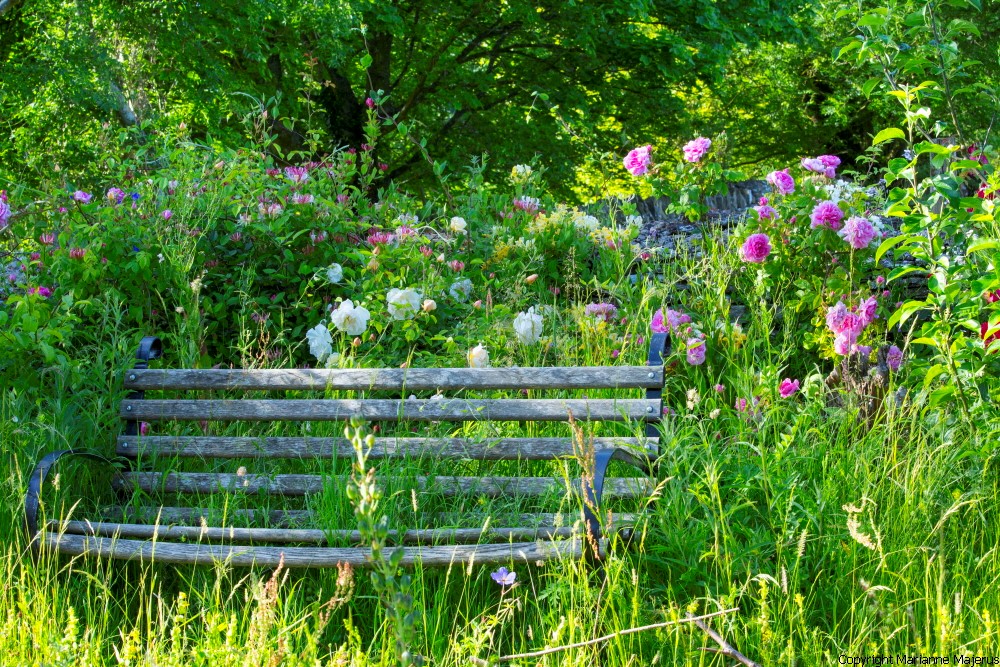
I often ask myself, why I’m a gardener. The answer’s somewhat mundane. I was a twin and we shared a small bedroom in a terraced house. We had entirely different personalities because we were fraternal, rather than identical twins My twin brother was the beautiful one. He got the curly golden hair, the navy-blue eyes and the long eyelashes. I got white-blond straight hair and National Health glasses, complete with a pink patch, because I was squinty-eyed. We were like Adonis and the Milky Bar kid, but luckily the patch worked and (as I found later) mascara does wonders.
We had different personalities too. I was the doer of the two, the facilitator and the interpreter, because like many twins we shared a secret language no one else was privy to. He was far less active than I was and I was a lark, awake at first light in summer with mouth fully engaged. I was taken into the garden or kitchen, depending on the weather, to allow sleeping beauty to continue his slumbers. I soon realised that I got ‘me-time’ rather than ‘us-time’. When you’re a twin, one to one contact is like fairy dust. Sharing the packet of sweets and the scooter, a ‘would-you-believe-it’ joint present, still rankles with me today!
Before I was three, I found myself looking into flowers at eye height and my earliest gardening memory is watching a bumble bee on a dark, double aquilegia. I can remember wondering what the yellow pollen sacs were on the bee’s knees. I’ve been fascinated by insects and all sorts of tiny creatures ever since, because I got that close-up eyeball to eyeball view. I also appreciated scent from an early age, and the most scented things in my childhood garden were the hybrid tea roses. They used to make my nose fizz, because I suffer from pollen allergies.
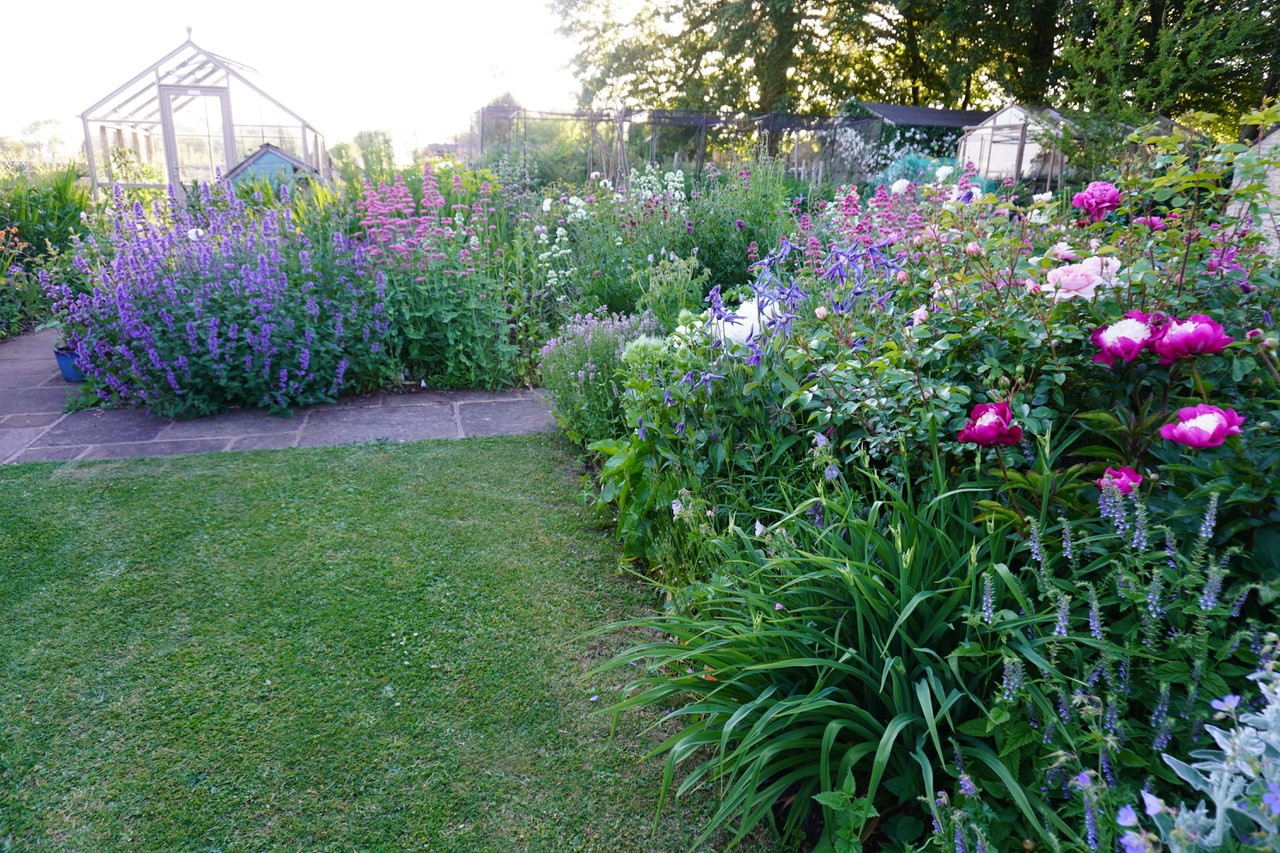
When I was old enough to take my pocket money down to Woolworths, the plant Mecca of my childhood, the first thing I bought was a packet of night-scented stocks, Matthiola longipetala. Once the days got shorter, I would sit on the doorstep, in my bit of suburban London, and simply inhale on muggy August evenings. The stars weren’t so dimmed by street lights back then, so I managed to learn some of the constellations. A Brownie badge soon followed.
Pallid mauves and whites are often more scented as evening descends, because the flowers are moth-pollinated. Some plants actually produce a stronger fragrance as light falls, including soapwort (Saponaria officinalis) and woodbine (Lonicera periclymenum). Earlier in the year, sweet rocket or dame’s violet (Hesperis matronalis) uses the same strategy. Many other plants are fragrant, such as peonies, but it’s the more pallid and pastel-tinted ones that pack the punch when it comes to scent. ‘Duchess de Nemours’, a lemon-scented cream, and ‘Mon Jules Elie’ a rose-scented silvery edged mid-pink, are both great garden peonies, despite dating from 1856 and 1888.
Fragrance is very sensuous, it goes straight to the hippocampus, the area of the brain governing emotions and memories. This can be good or bad. A whiff of garlic still brings back the horrific nausea of my first pregnancy to this day, despite the fact that my daughter is in her mid-forties. Mostly it’s good though: the scent of clove-scented pinks spins me back in time some fifty years, to my first proper garden. I can remember a damp June evening full of pleasure.
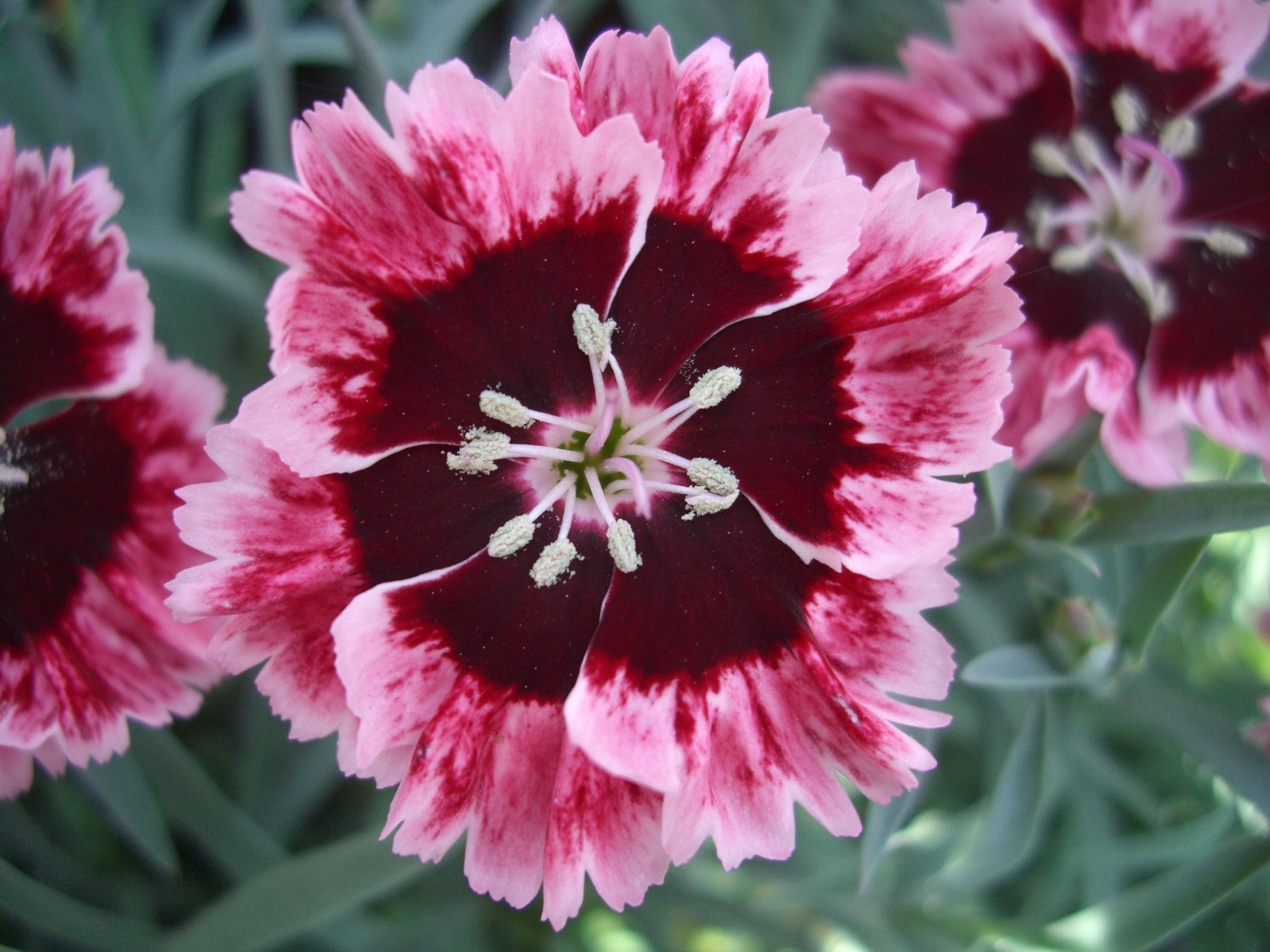
Dianthus or pinks want to attract pollinators and, by June, there are day-flying moths. Some of the simplest flowered forms pack the biggest punch. The petals were used to flavour wine in times past, a cheaper alternative to spice, and one old name was ‘Sops-in-Wine’. Beth Chatto sells this single June flowering maroon-pink flecked in white, although it may not be the same plant described in the 17th and 18th century.
Earlier varieties of pink, flowered in June only. They had fringed (or pinked edges) edge giving rise to the common name. They also coined the name for pink, a colour known as red until the 18th century. We have three native species in the UK. Dianthus gratianopolitanus or the Cheddar pink, was over-collected and is now restricted to inaccessible outcrops. Dianthus deltoide,s or the Maiden pink, can still be found on sandy soil in East Anglia. Dianthus armeria, the Deptford pink, now colonises only 7% of its previous area according to Plantlife, who are working to improve things.
Another species, Dainthus carophyllus, the Clove pink, is thought to have come to England with the Normans, when they imported building stone from France for their castles. There is a famous colony close to the walls of Rochester Castle in Kent. Many old-fashioned pinks were derived from these four species and many were known by Elizabethan gardeners, according to John Gerard’s herbal of 1597.
The less-hardy carnation, literally derived from coronation, because the flowers were used to crown heroes, has fuller flowers over a longer season. The wider foliage curls at the tips. Plant breeders aimed to make hardy, perpetual-flowering hybrids and Montague Allwood produced a whole race of Dianthus x allwoodii in the mid-20th century. The most famous being ‘Doris’ (1945). Monty, as he was always known, failed to recognise this plant’s value and relegated it to the compost heap. Luckily a member of his staff rescued it and multiplied it up in numbers, whereupon Monty changed his mind and named it after his wife! Allwoods, under different ownership now, are still selling pinks and many other plants on their website – www.allwoods.net
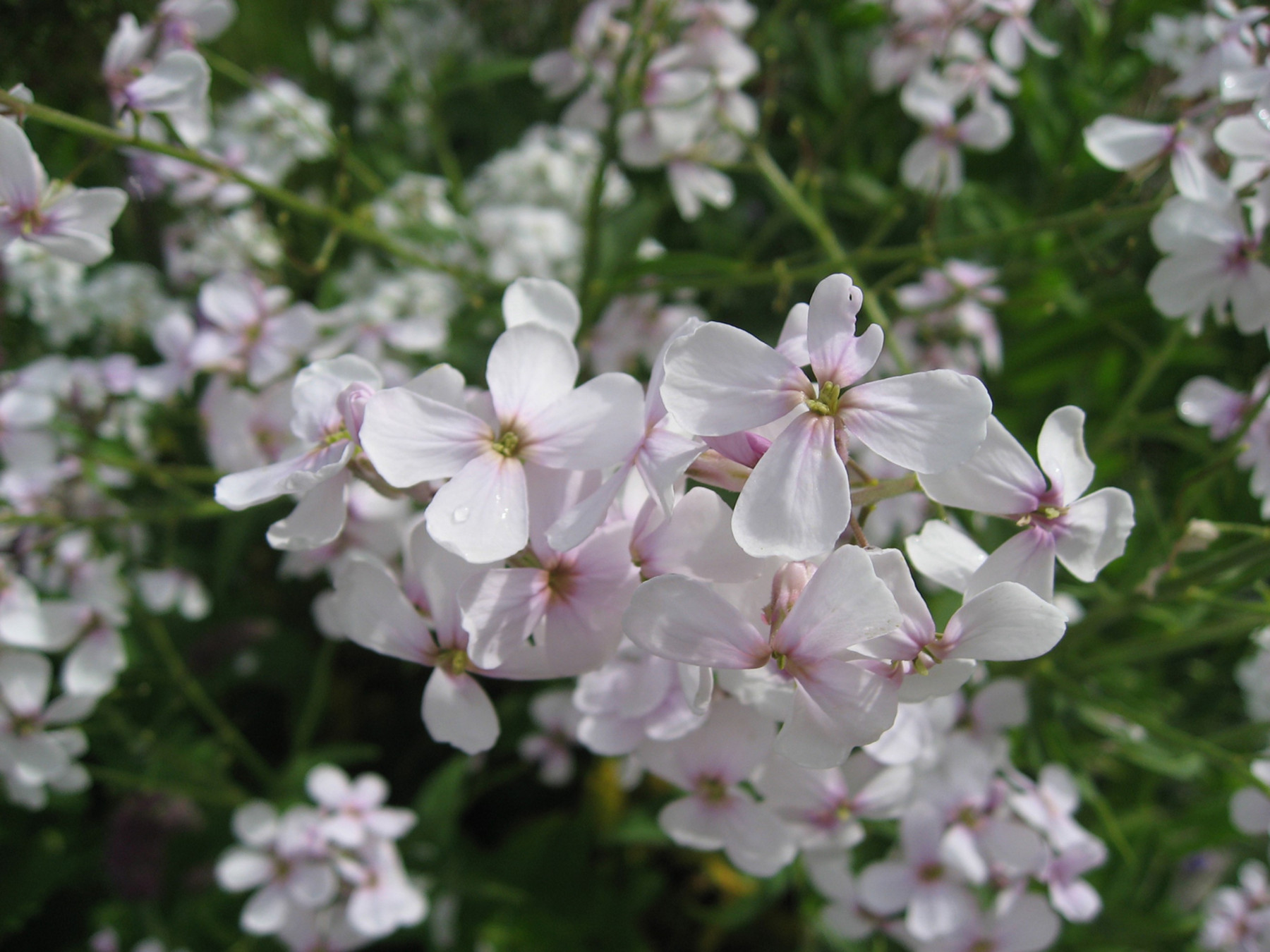
Perpetually flowering pinks, although great garden plants, tended to lack a heady fragrance. However, Devon-based Whetman Garden Plants are putting the fragrance back into long-flowering dianthus through plant breeding carried out by a French lady named Laetitia Moucheboeuf. They’ve raised a fragrant, double white named ‘Memories’ and this is widely available – among others.
‘Memories’ is a modern, more-pristine version of the glorious ‘Mrs Sinkins’, a slightly untidy double, green-eyed white with fringed petals and a split calyx. This old Victorian variety was raised by the Master of Eton Union Workhouse in Slough’s in 1868. John Sinkins named it after his wife Catherine, although considerable pressure was put upon him to name after Queen Victoria. He resisted and it is still one of the most widely grown garden pinks due to its powerful fragrance. There are 3 forms sold, but the true one has a split calyx. The Slough Coat of Arms includes this plant.
My Mrs Sinkins came from an old villager named Leethie, long since gone sadly, and it’s planted on the path by my south-facing cottage wall. It’s in front of a perennial white sea stock named Matthiola incana ‘Alba’. Both are both highly fragrant and both need full sun and good drainage, as their greyer foliage indicates. They welcome me home in Spring and Summer.
The sea stock, or matthiola, must not be allowed to produce pods. If you allow this, your original plant will think ‘job done’ and die. Cutting off the faded flowers, before any pods form, will extend its life span by four to five years. This long-flowering plant begins in April and carries on, but eventually exhausts itself just as perennial wallflowers do.
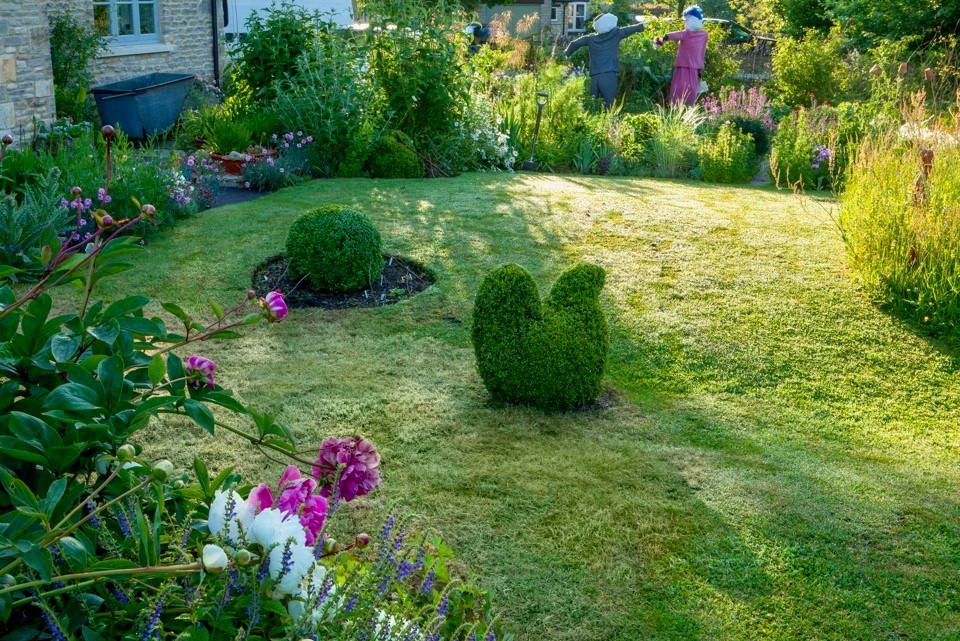
Hopefully you will get cutting material from your sea stock. These pieces root easily in coarse horticultural sand as long as they are placed in cool position. The shadiest area of your Hartley greenhouse is ideal for cuttings taken in summer. If there are buds, pinch them off. Keep the sand damp.
Dianthus also tend to be short lived, but you can extend their life by trimming them back after flowering and this will prevent them becoming leggy. It’s also a good idea to raise new plants from ‘insurance’ cuttings every year. Look for shoots, without buds ideally, and water your plant well before taking your cuttings so that the plant material is turgid. This goes for any plant you may want to propagate from cuttings. Water well the day before.
Grey-leafed plants are drought tolerant, so they survive dry hot summers, so a warming climate shouldn’t deter them. They need good drainage, so add coarse horticultural grit when planting if your soil’s heavy. If you want summer fragrance in damper spots, use our native honeysuckle Lonicera periclymenum. I have several plants among shrubbier roses, including the summer-flowering ‘Königin von Dänemark’ (Queen of Denmark) and an American cream-tinted beauty called ‘Mrs Honey Dyson’. The latter repeat-flowers.
Summer evenings are scented affairs at Spring Cottage – and I’m still learning the constellations sixty years on!



